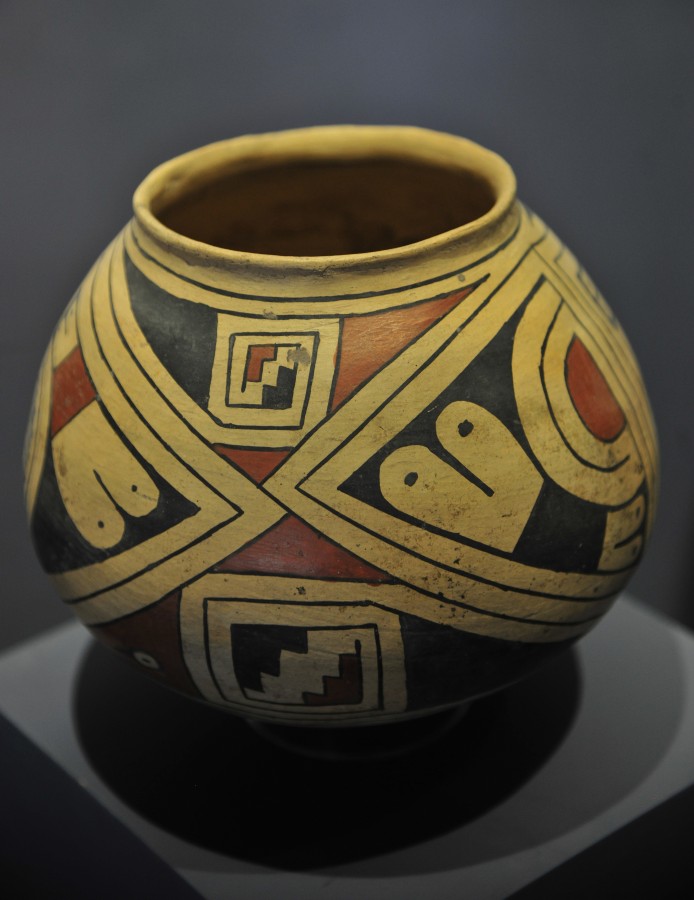The Museum of Northern Cultures, among many other archeological finds obtained from the excavations of 1956, exhibits a wide range of pre-Hispanic pots. These belong to the cultural tradition of Casas Grandes, with Paquimé as the regional center during the thirteenth and fourteenth centuries. This cultural tradition blended elements from Pueblo cultures in the North and the Mesoamerican civilizations towards the South.
The pre-Hispanic ceramics from Casas Grandes are widely recognized as they are very unusual compared with the ceramic traditions of the Greater Southwest. But their true splendor comes from what they reveal about the society which made them, as they allow us to discover more about one of the most important peoples in the region. The ceramics from the Middle Period have geometric designs painted in red and black on a pale background. The polychromatic styles from the Casas Grandes Culture include Babícora, Carretas (“Carts”), Corralitos (“Paddocks”), Dublan, Escondida (“Hidden”), Huérigos, Villa Ahumada (“Smokey Town”) and, the most dominant, Ramos Polícromo (“Polychrome Branches”), which seem to have been produced in the culture’s central area. Other types were made in remote areas. The potters were also exceptional in their creation of smooth ceramics, with styles known as Playas Red (“Red Beaches”) and Ramos Black (“Black Branches”). Few ceramics were imported, such as the El Paso Polychrome style which was the most commonly traded ceramic. This trade shows that contact existed with the villages of Jornada Mogollón in New Mexico.
The Casas Grandes ceramic tradition weaves together various aspects of life, both domestic and ritual. It is evidence of the development from functional ceramics to objects of art, with daring features, polychromatic geometrical designs and various shapes and decorations. The scientific studies undertaken to analyze the composition of the clay reveal that Paquimé was the center for specialized production in a large trade network which traded ceramics with other towns. The images represented on the pots tell the story of a society and its mythical tales by using symbols from the ancient cultures.
The vessels which use effigies are particularly interesting, representing shapes of animals, humans, and natural and supernatural beings. They have a rich iconography which is unsurpassed by any other ceramic tradition in the region. The symbolic importance of macaws and snakes is unequivocal. Snakes symbolize the great snake of the Southwest and the macaws symbolize life. The growth of a governing elite in the thirteenth century coincides with a huge increase in the production of attractively colored ceramics, heavy with symbolism. Some archeologists suggest that this was a political, economic and religious reinforcement of the values and interests of the governing classes. The increase in the influence and power of the elites allowed for a surge in specialized potters who were capable of creating vessels with spectacular art. Many of these examples appear throughout the three galleries of the museum’s exhibition, with strongest emphasis in the second.







